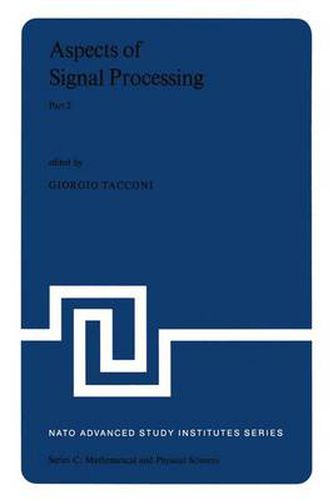Readings Newsletter
Become a Readings Member to make your shopping experience even easier.
Sign in or sign up for free!
You’re not far away from qualifying for FREE standard shipping within Australia
You’ve qualified for FREE standard shipping within Australia
The cart is loading…






This title is printed to order. This book may have been self-published. If so, we cannot guarantee the quality of the content. In the main most books will have gone through the editing process however some may not. We therefore suggest that you be aware of this before ordering this book. If in doubt check either the author or publisher’s details as we are unable to accept any returns unless they are faulty. Please contact us if you have any questions.
This paper describes the results of current research at DREA in which techniques of optimum array processing are being applied to active sonar. We are presenting these results at the Advanced Study Institute in order to illustrate some actual applications for such processing and to point out some of the practical considerations which arise in real systems. In particular, the paper concerns the problems which arise when the individual sensor elements have a complicated directivity pattern themselves. This is a common phenomenon in active systems where the receiving sensors are complex resonant structures and are housed in a dome or towed body presenting various baffling and diffraction effects. Most treatments of array processing consider ideal elements which have well behaved directivity properties and are transparent to the field. The results of this paper show that where these properties are not met, careful in situ array measurements are required, and even with such measurements practical array gains may not be as good as predictions based on ideal sensors.
$9.00 standard shipping within Australia
FREE standard shipping within Australia for orders over $100.00
Express & International shipping calculated at checkout
This title is printed to order. This book may have been self-published. If so, we cannot guarantee the quality of the content. In the main most books will have gone through the editing process however some may not. We therefore suggest that you be aware of this before ordering this book. If in doubt check either the author or publisher’s details as we are unable to accept any returns unless they are faulty. Please contact us if you have any questions.
This paper describes the results of current research at DREA in which techniques of optimum array processing are being applied to active sonar. We are presenting these results at the Advanced Study Institute in order to illustrate some actual applications for such processing and to point out some of the practical considerations which arise in real systems. In particular, the paper concerns the problems which arise when the individual sensor elements have a complicated directivity pattern themselves. This is a common phenomenon in active systems where the receiving sensors are complex resonant structures and are housed in a dome or towed body presenting various baffling and diffraction effects. Most treatments of array processing consider ideal elements which have well behaved directivity properties and are transparent to the field. The results of this paper show that where these properties are not met, careful in situ array measurements are required, and even with such measurements practical array gains may not be as good as predictions based on ideal sensors.